Corporate museums are part academic and business and occupy the gray zone in between. It is an organization that works with several departments in a company including public relations, branding, Advertising, and HR. This series aims to look at the role, function, and future of museums run by corporations through interviews with PR professionals.
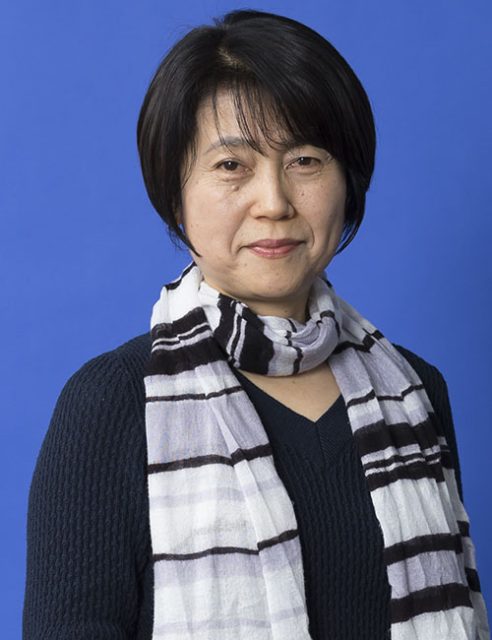
Ikuyo Nakagawa
PR Consulting Dentsu Inc.
What a PR professional saw and felt was so appealing about the Ad Museum Tokyo
Advertising has brought innovation to people’s lives and businesses. You’ll discover all kinds of things that give you a further look at its past from the moment you set foot in the Ad Museum Tokyo, with so many things on display about its history. No matter how valuable and precious artifacts are, simply displaying them does not give the full story. Everywhere you look in the museum, you can see ingenious ways the thoughts and emotions behind them resonate and arouse the imagination of visitors. In this day and age of virtual places, here, you can experience something that only real places can offer. I would like to introduce the Ad Museum Tokyo, a museum that not only tells history but also engages in initiatives that lead to the future through exhibitions that address social issues, from a PR (public relations) perspective.
The Ad Museum Tokyo is located on the second basement floor of Caretta Shiodome, a shopping mall just a short walk from advertising giant Dentsu’s headquarters in Shiodome, Tokyo. As the name suggests, it is the only advertising museum in Japan. It is operated by the Yoshida Hideo Memorial Foundation, which was established in honor of the will of the fourth president of Dentsu, Hideo Yoshida, who devoted himself to the development of the advertising industry. The museum was opened in 2002 to commemorate the centennial of his birth and renewed in 2017 to commemorate its 15th anniversary, with the aim of making advertising artifacts widely available to the public and deepening the understanding of the social and cultural value of advertising communications. Since the renovation, the number of visitors to the museum has increased from 80,000 a year to 100,000 and the general public, including students, now accounts for 60 to 70 percent of the visitors rather than those involved in advertising. A lot of university seminars, particularly those for advertising and marketing majors, visit the museum. In recent years, it has been featured in articles that have introduced it as trendy and great for dates, and now it is often visited by young couples. It is located in a shopping mall, and the glass walls added after renovations give it a bright and open structure. This gives it an atmosphere that makes it easy for anyone to drop in on the way home from shopping. Currently, the museum has had more than 2 million visitors.
Marketing began in the Edo period?
The power of the flyer that made the innovation of business known
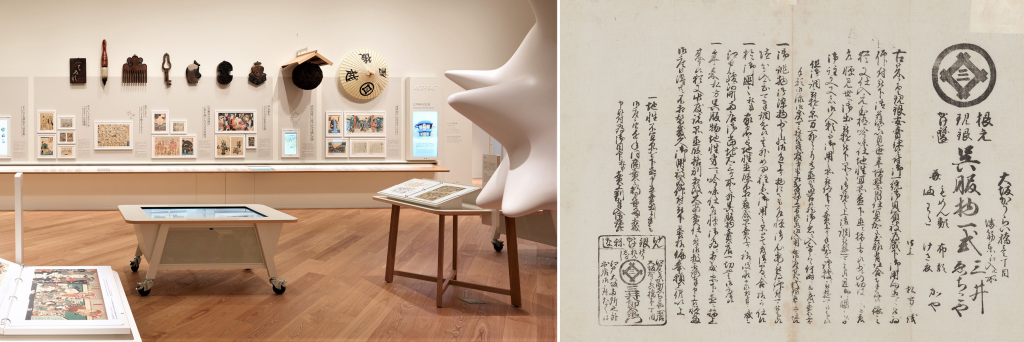
Left: Edo period exhibition corner right: Hikifuda (a flyer in today) “Mitsui Echigoya Osaka Koraibashi Store” (opened in 1691)
Photo courtesy of the Ad Museum Tokyo
It is said that there are more than 330,000 items in the collection from the Edo period to the present day. Among them, I would like to focus on the exhibition of advertising in the Edo period. The history is so interesting that even Peter Drucker commented on it, saying “Marketing was invented in Japan around 1650.” In his book “Management,” he said that marketing begins with Mitsui Takatoshi, the founder of Echigoya. So I would like to briefly introduce his story.
At that time, kimono shops visited samurai residences and wealthy townspeople to take orders, and customers paid at the Bon festival (late summer) or at the end of the year. Mitsui Takatoshi ended this practice, which required time and manpower to collect the money, and devised a new commercial method, which lowered the price of kimonos by conducting cash transactions at the store called “cash only, price as advertised.” In addition, he defied the conventional wisdom at that time, when kimonos were sold by tan (a traditional unit for cloth, about 35–40 centimeters by about 12 m), and started selling by piece in the amount that the customers needed, gaining popularity among the common people.
It is truly a business innovation. Echigoya created “hikifuda” (today’s flyers) and distributed them to the common people to spread awareness about this new sales method. The contents of the flyer spread through word of mouth from person to person, and the synergy between advertising and organic PR led to a compelling sales promotion. Since customers flocked to Echigoya, other shops had no choice but to follow suit. This trend changed people’s attitudes. Everyone was treated equally, regardless of whether they were samurai or commoners, as long as they paid the price. This new business method brought about innovation and is truly wonderful, but the power of the flyer that made it known to the world was enormous. One leaflet led not only to the development of advertising culture but also changed society and people’s lives.
Kabuki actors were influencers during the Edo period
Aside from this, many of the roots of advertising that still have sway today were established during the Edo period. Hanami (cherry blossom viewing) in Yoshiwara was a great place for advertising as many people would gather. Esugoroku (a Japanese board game with pictures), which was popular among the common people, is similar to the mobile games of today as it was a great way to advertise shops and products while people were playing it. Advertisements appeared everywhere in Kabuki performances and were basically corporate tie-ups. Kabuki actors were also influencers, and word-of-mouth about them spread like social media. The influence of popular celebrities is the same now. In addition, the creators of advertisements in Edo are introduced in modern interview-style animation (see the figure below). It introduces Hiraga Gennai, the first copywriter in Japan, and Tsutaya Juzaburo, a talented producer who discovered many talents such as Sharaku, Kitagawa Utamaro, and other creators, showcasing not only their achievements but also popular products, showing why they were popular, and providing tips to find talent, which are so interesting that you cannot help but listen until the very end.
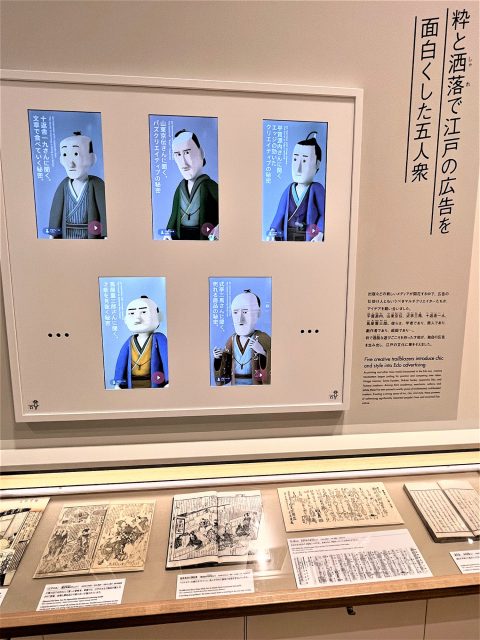
*Photo of advertising creators in Edo taken by the writer
Wartime advertising—what we can learn from the history of advertisement
Advertising in the Edo period is not the only interesting thing you’ll discover at the museum. The Ad Museum Tokyo covers the history of Japanese advertising as well as other themes that narrate the era, but there are particular advertisements that I would like the world to see now. I’m referring to advertisements from wartime Japan, known as a dark period in our history. It was a time when the role of advertising changed drastically from the beautiful depictions of products to the promotion of national prestige. Advertisements with slogans such as “I won’t ask for anything until we win” and “Go!, a fireball of a hundred million.” are on display. Nowadays, we see the ravages of war in Ukraine in the news every day, but we tend to think that it is happening somewhere far away, as we live in peaceful Japan. However, looking at these advertisements, it reminds us that only two generations ago, Japan was at war. In addition to advertising, PR must have further sped up propaganda. It is true that there was a time in Japan when information was strictly controlled so that only information that was convenient for those in power was discussed. As it is said, “Advertising is a mirror that reflects society and people,” the change in advertising expression symbolizes the change of the times. We still have much more to learn from it today.
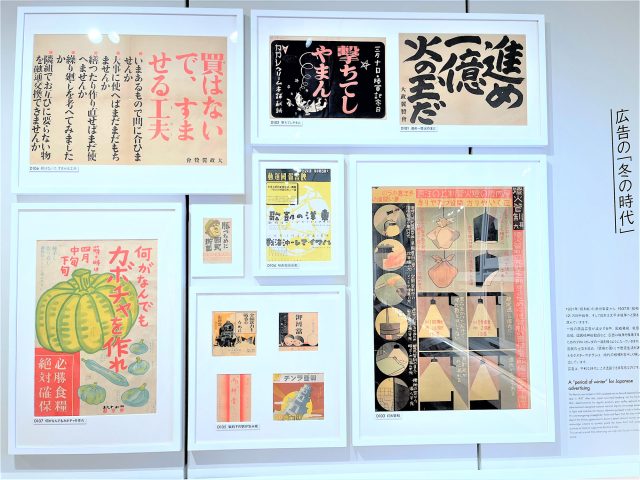
*Photo of Wartime Advertising taken by the writer
The pursuit of a captivating presentation
What further enhances the interesting content of each era is the “captivating presentation.” No matter how valuable and precious artifacts are, simply displaying them will not give the full story. From a PR perspective, it is important to talk about the background, feelings, and emotions of information based on facts in an easy-to-understand manner rather than simply telling it in a common panel exhibition. Although by no means is it a large facility, there is a switch button in the exhibition corner that allows you to dig deep, and when you press it, the sound and video suddenly pop out of the flat exhibition. The self-introduction scene of Hiraga Gennai, a historical figure mentioned above, is one example. When a person who lived in that era virtually appears in front of you, your imagination will certainly be stirred.
This may be a given since advertising professionals created them, but still, the exhibition titles that captivate the viewers in an instant say it all. For example, “The world’s first!? genius marketer” refers to Mitsui Takatoshi of Echigoya, who created the aforementioned business innovation. All the descriptions are written in 200 characters or less, never letting the viewers get bored. In addition, there is a digital display where you can freely touch and browse the thumbnails that appear on the monitor, and you can browse advertisements as much as you want, such as TV commercials and posters from the 1950s to the present. I spent most of my time here because they made me feel nostalgic (laughs). If your eyes get tired from the digital exhibition, you can go to the analog exhibition next to it. This is probably the only place you can see the storyboards from famous commercials. Today, everything is processed digitally, but the storyboard drawn with paper and pen is the strongest content that conveys the thoughts of the creators. The notes written in scribbles in the margins are interesting.
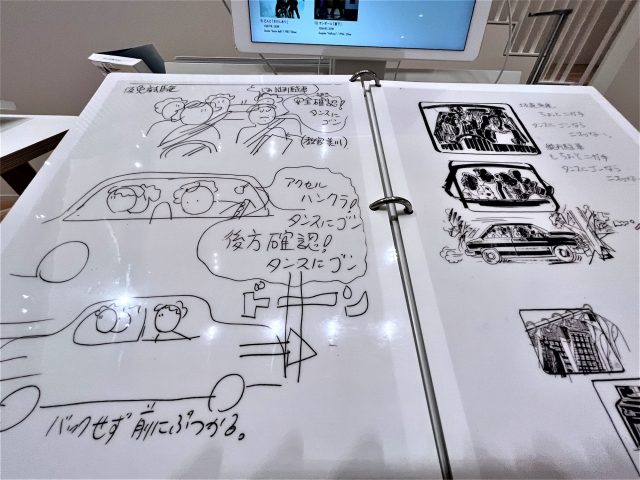
*Photo of CM storyboard taken by the writer
Sharing skills taught by professionals and libraries where you can lend "people"
In addition to the permanent exhibition of each era, the Ad Museum Tokyo also holds annual exhibitions introducing the latest designs and advertisements from the world’s leading creative awards such as London, Cannes, and New York. When I visited, the special exhibition for Cannes Lions International Festival of Creativity 2020/21 was being held. The descriptions of the works were carefully written, and a popularity vote by the visitors was held. They also have unique events such as ad-making workshops where you can learn professional skills and a “Human Library, under the concept of lending people,” where those who are susceptible to prejudice, such as LGBTQ people, in society are regarded as “books” and engage in a dialog with general “readers.” They will resume these events once COVID-19 settles down. It can be said that it goes beyond the conventional concept of the corporate museum in that it not only houses the history of advertising and its artifacts but also engages in initiatives that build relationships with people and lead to the future through various activities.
With the brand statement
The Ad Museum Tokyo has a brand statement. The message followed by “Fresh Discoveries Await” conveys the universality of advertising, i.e., what attracts people doesn’t change over time, and a strong feeling that advertising is interesting because we can still explore and make new discoveries from the various past advertisements. I was able to feel the idea and attitude throughout the building. Starting from the origin of advertising, the Edo period to the Meiji era, when newspapers and magazines were born, and to the present day, when we see digital technology being fully utilized, the more we know about each of these changes, the more new discoveries we can make. There are lots more to learn from the history of relationships between each era and advertising, as well as between people and advertising. I interviewed Mr. Tucker Tsuruga of the Ad Museum Tokyo about the future. “It is said that there is no other museum in the world that deals with the history of media and advertising comprehensively. “Nishiki-e (woodblock color prints)” alone is highly valuable as an art, especially overseas, but here we focus on “Nishiki-e” as a medium that reflects the social situation of the time. I would like to convey such a perspective more broadly and aim to make it a unique museum that the world can be proud to have. To that end, I would like people to actually see and feel what it can offer, so I’m hoping that we can have a museum somewhere else besides Tokyo. Maybe there can be the Ad Museum XXX somewhere else here in Japan or even overseas… I would like to start with a traveling exhibition.”
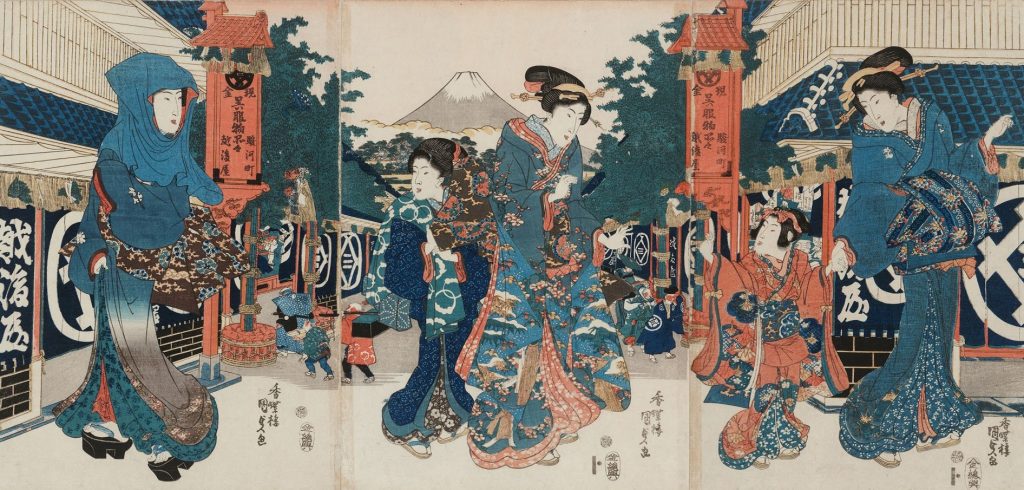
* Photo courtesy of the Ad Museum Tokyo, “Surugacho Echigoya (Picture of a beautiful woman at the store),” which reflected the trends of the time and also played the role of a fashion magazine.
I see. You could have the Ad Museum Osaka, the Ad Museum NY… there are endless possibilities. In recent years, there has been an increase in the number of museums that have been developed virtually, regardless of location. However, it reminded me of the attraction a physical “place” can achieve that Naoya Takayanagi of Taisho University talked about in the first article of this corporate museum series. It leads to asking, “Who are you going with?” Are you going with a significant other, a friend, a parent, or a child? If you have a good time, you can stay there for hours. It is an experience that you cannot get in the virtual world.
Lastly
I am an employee of a PR company that celebrated its 60th anniversary last year, and I truly believe that the brand statement of the museum, “Laughter and tears; astonishment and empathy. The things which touch us emotionally are connected at their roots, transcending time.” also applies to the PR industry. In the Edo period, innovation that defied the conventional business model happened to make people’s lives better. Using various techniques is also the PR business itself, and Edo marketing seemed to overlap with PR. Just one area is enough. One day, I hope a PR museum will be built next to the Ad Museum Tokyo. As a closing remark, I would like to mention that the late President Hideo Yoshida was the very person who had an eye on PR in the first place, which began in the United States, and introduced it as a “business” in Japan.
